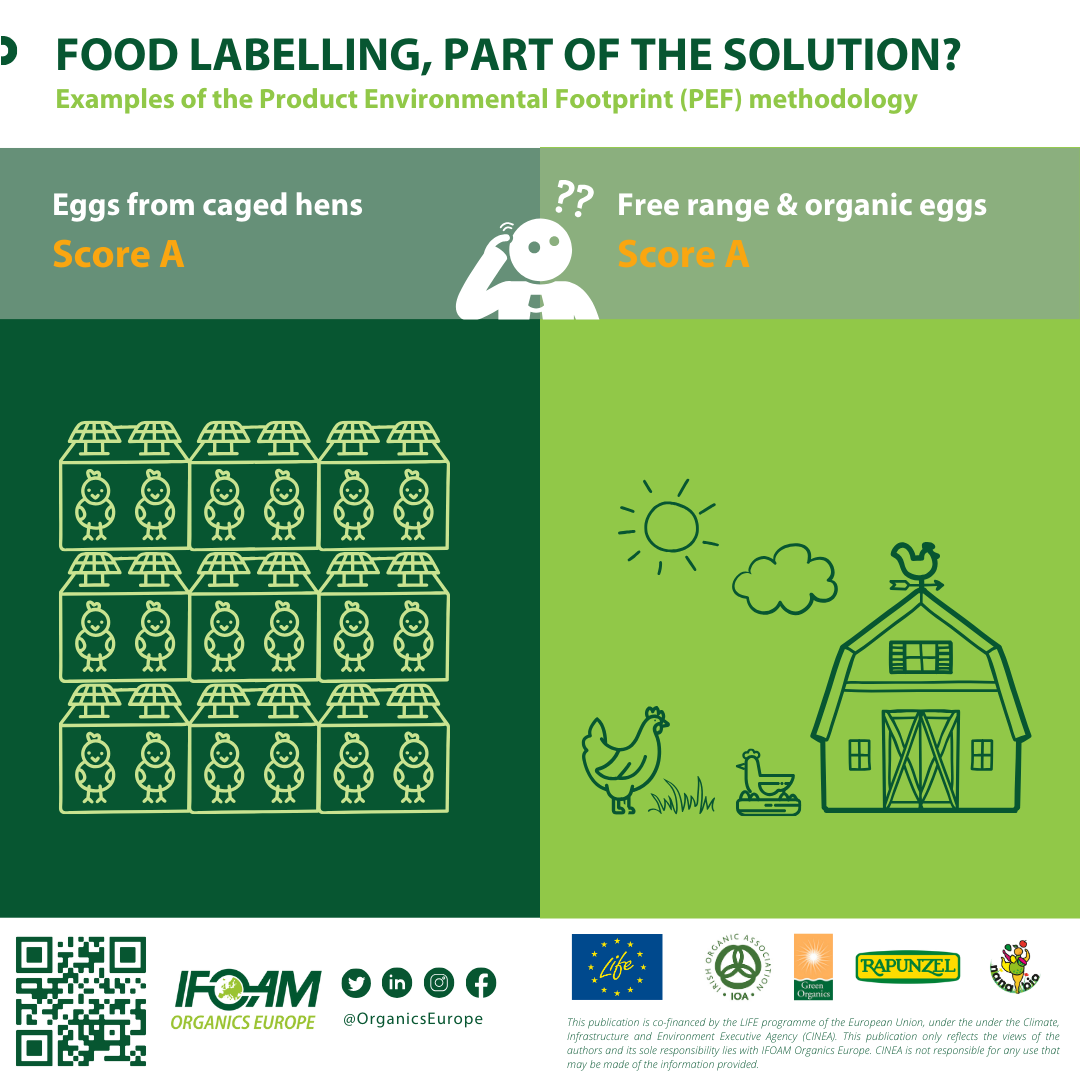Food labelling, part of the solution?
The Product Environmental Footprint (PEF) is a methodology that aims to evaluate the environmental impact of a certain product, food, and non-food. This tool is based on a life cycle analysis (LCA) and the European Commission’s Directorate-General for Environment has been developing it for about 10 years.
While this method works for manufactured goods, it is not capable, as per its conception, to account for the environmental impact within the complexity of agri-food systems. The main concern is that the PEF does not adequately account for the environmental impact of food products when it comes to externalities such as the impact of pesticides, the impact on biodiversity or animal welfare.
The PEF can differentiate the environmental impact between food categories, but not within food categories. This is because the PEF does not differentiate well between the impact of different methods of production. For instance, free range or organic eggs with the least environmental impact and high level of animal welfare will score the same than eggs from caged hens.
Generally, given that the PEF does not consider externalities well, it tends to reward more intensive methods of production.
Have a look at our infographics below:



Here you can find a high quality version of the above EN visuals: Eggs – Apples – Wheat.

The infographic on eggs is also available in FR.
On top of the above visuals, IFOAM Organics Europe has summarized this and other concerns about the PEF in its position paper and in its technical briefing that highlights the limitations of its methodology.

